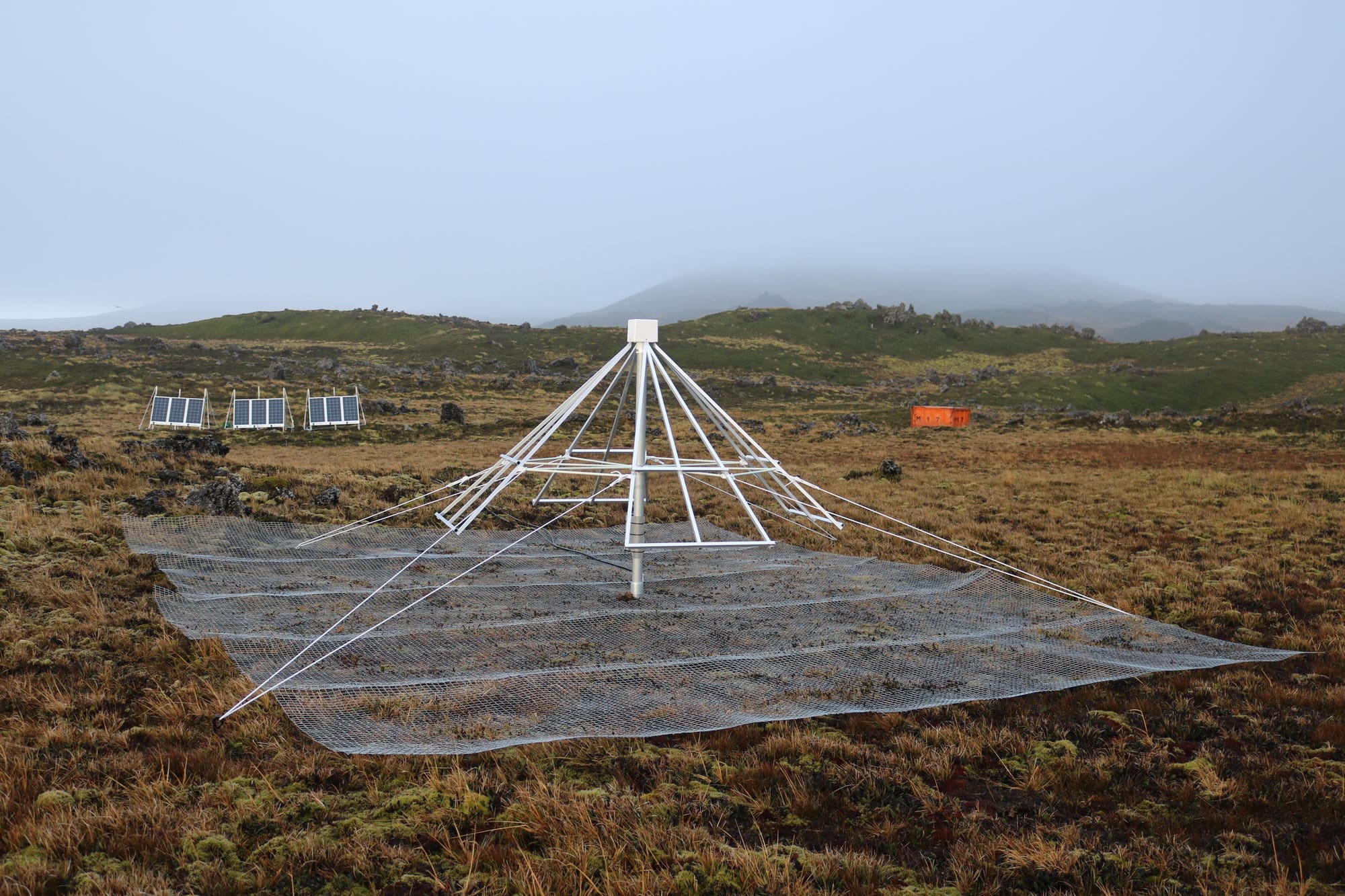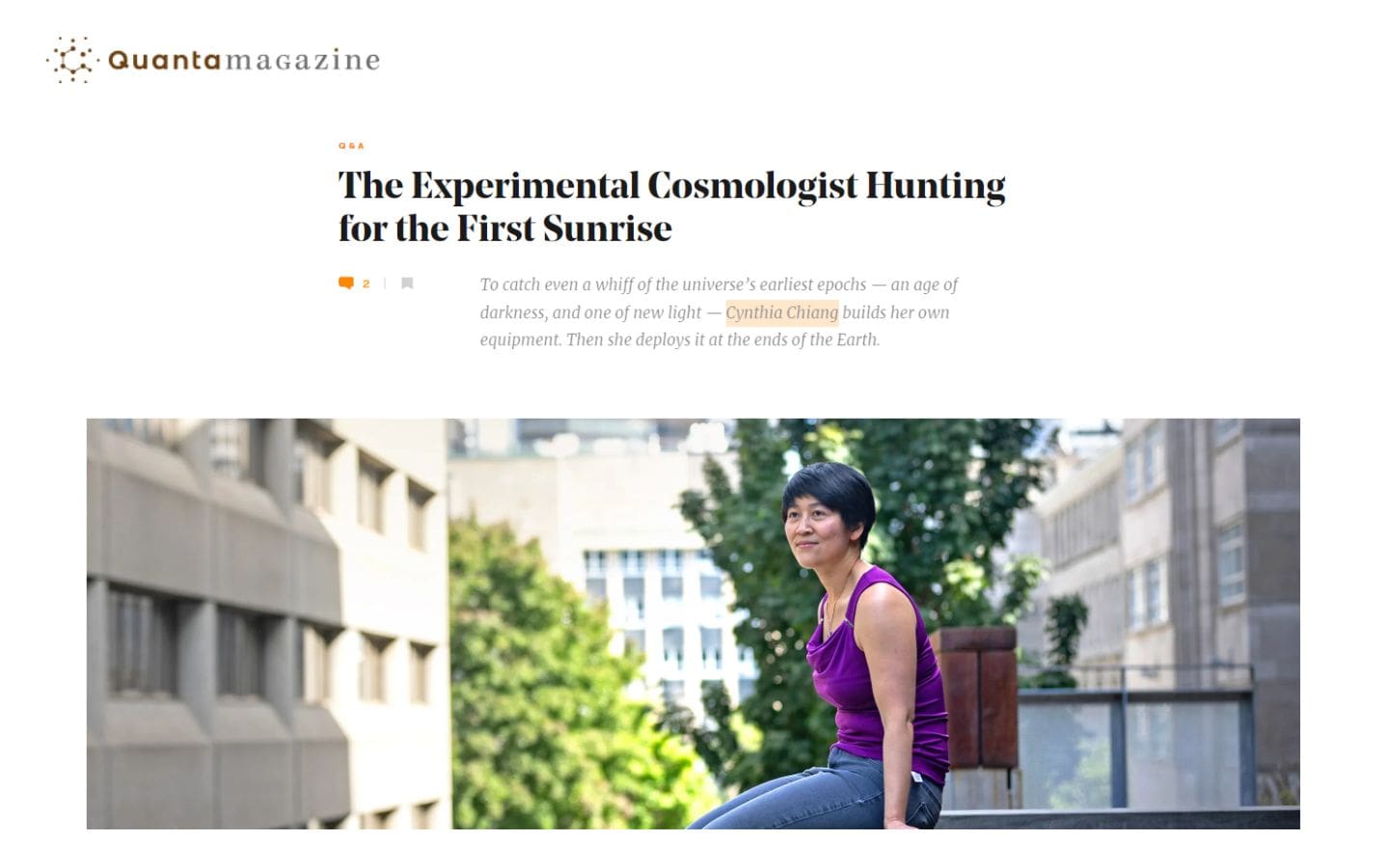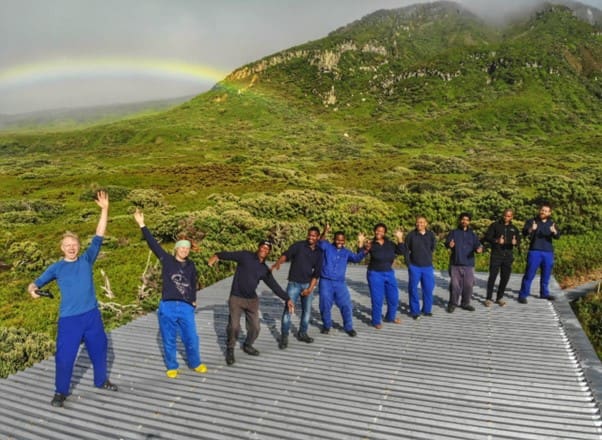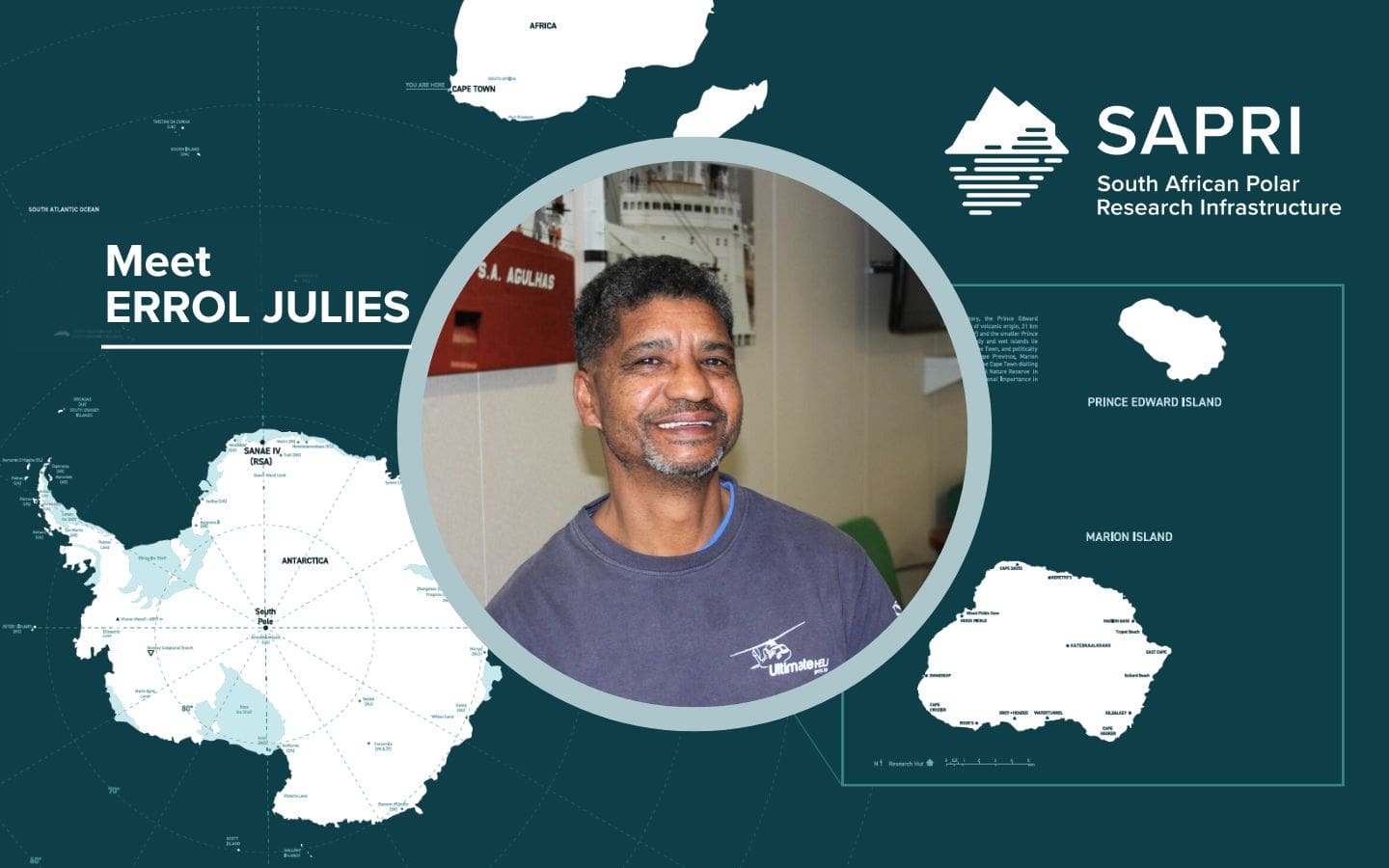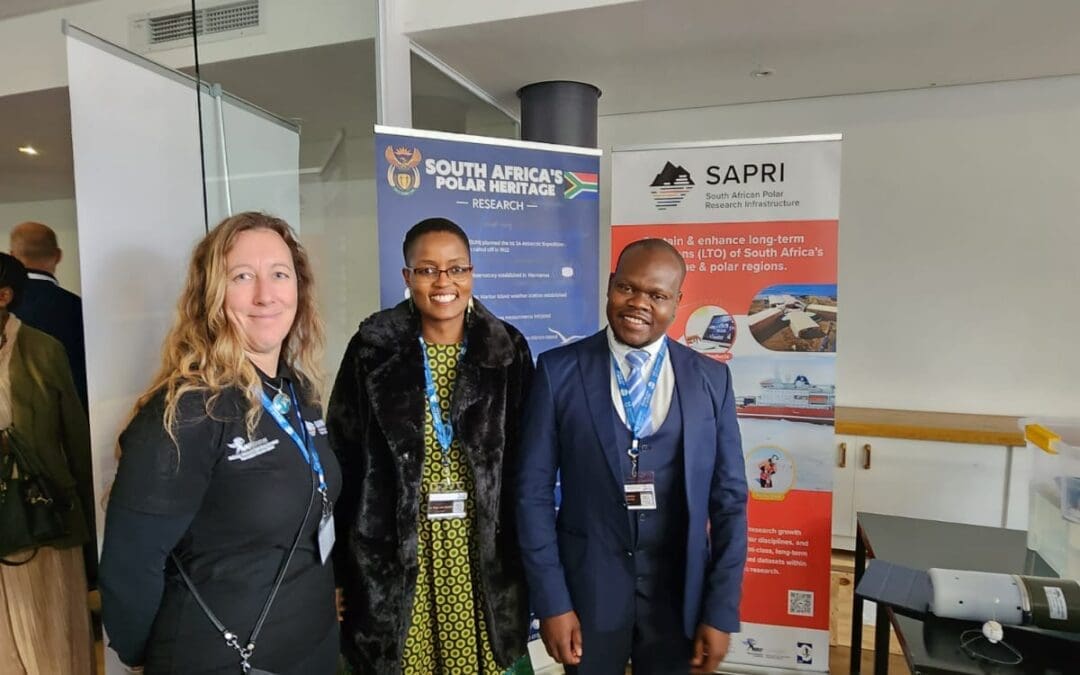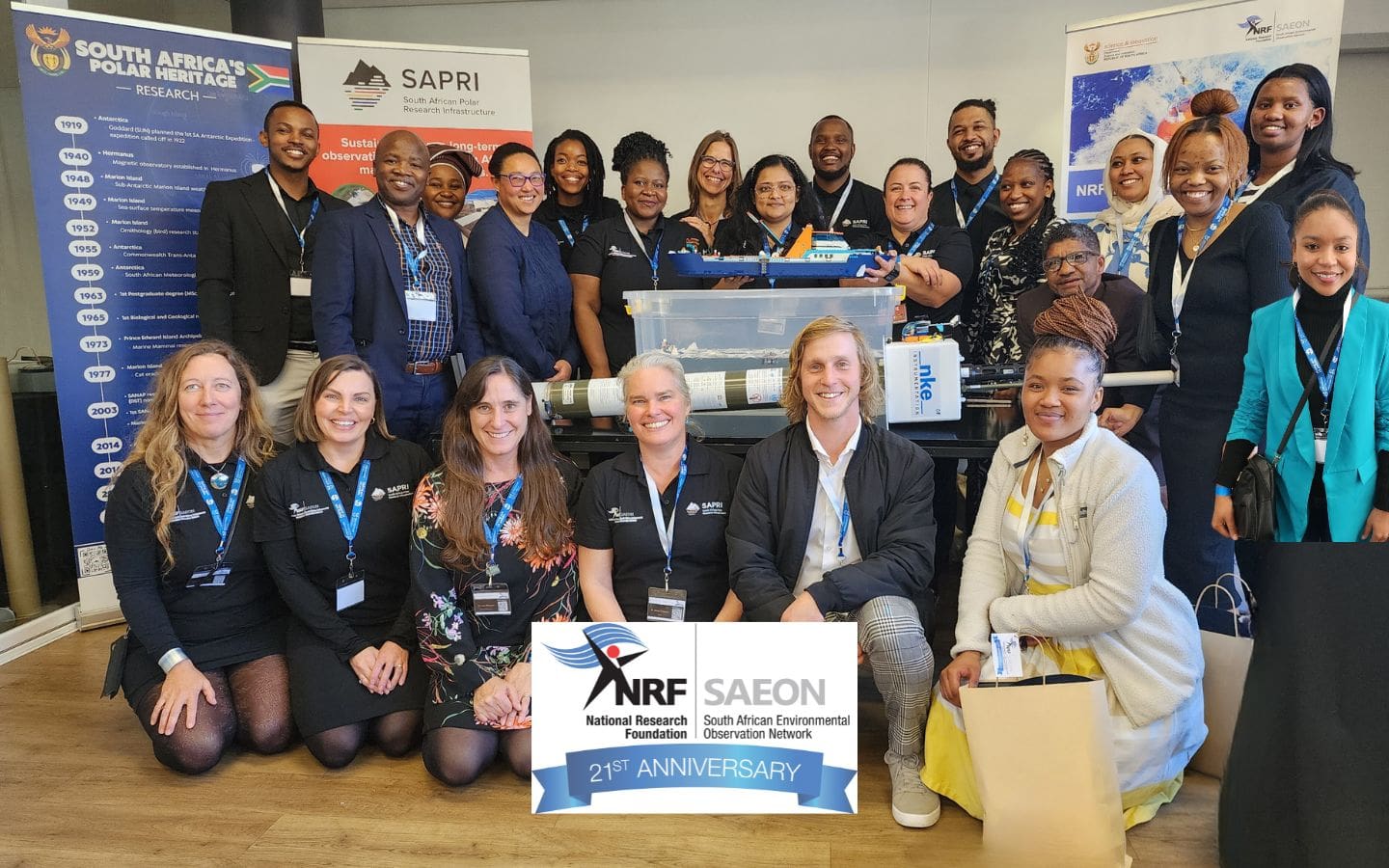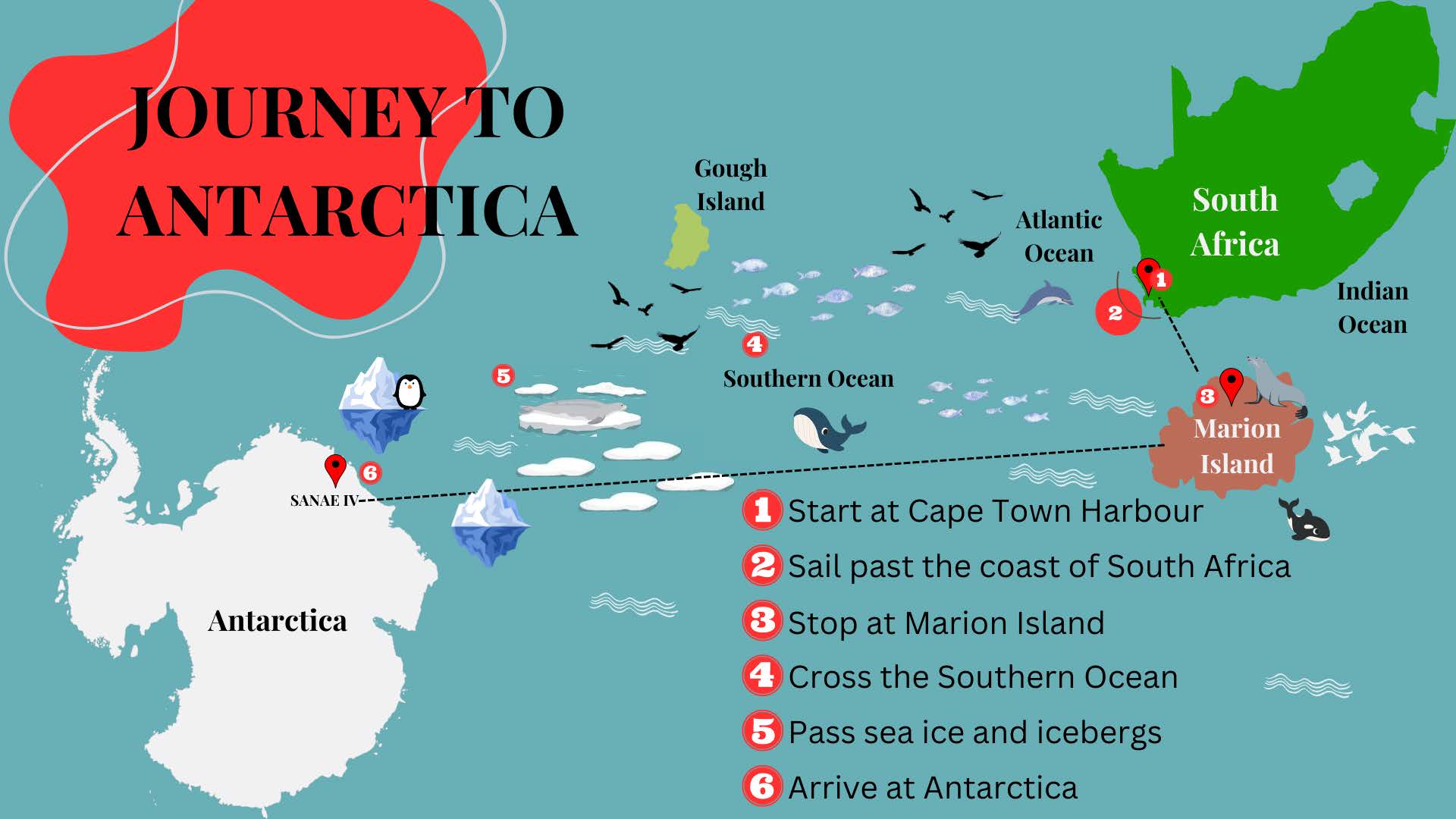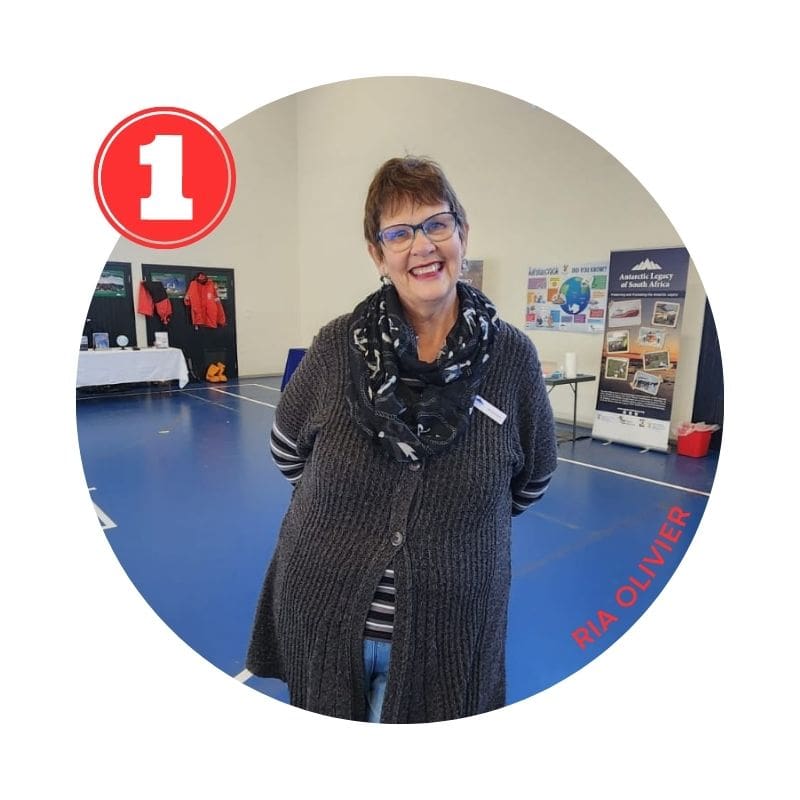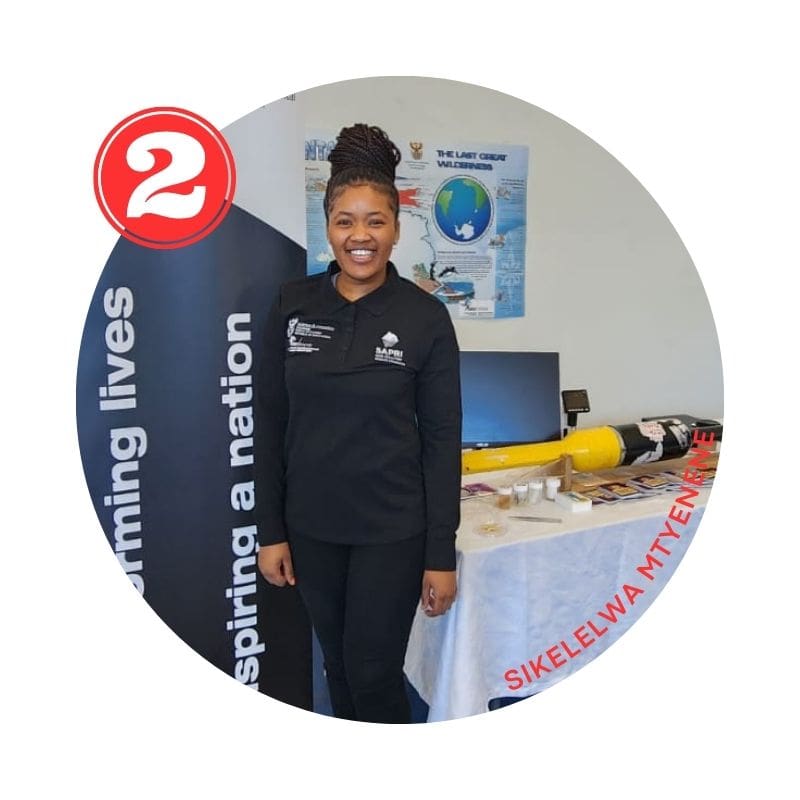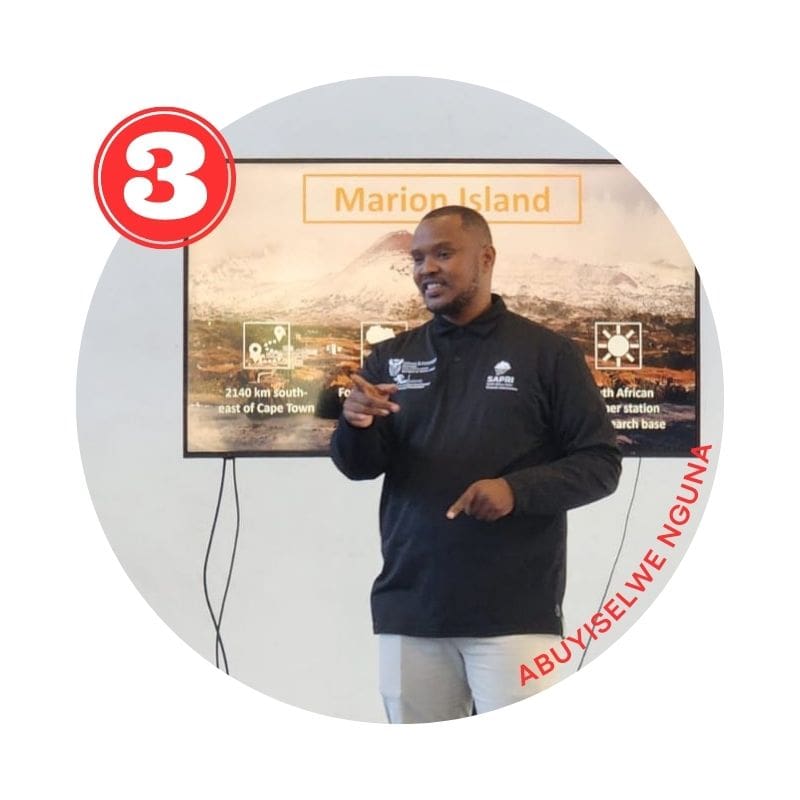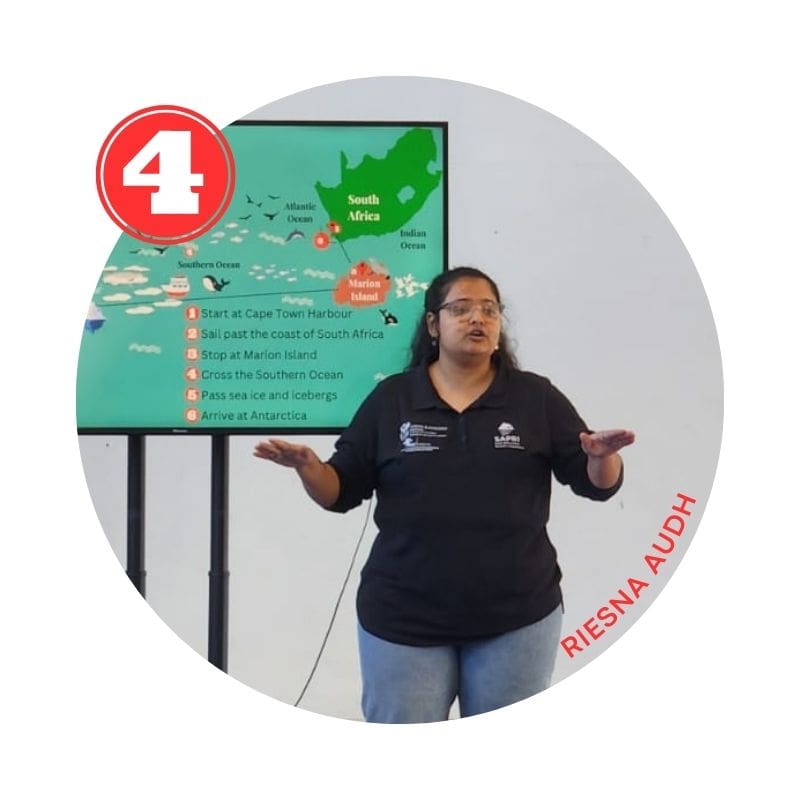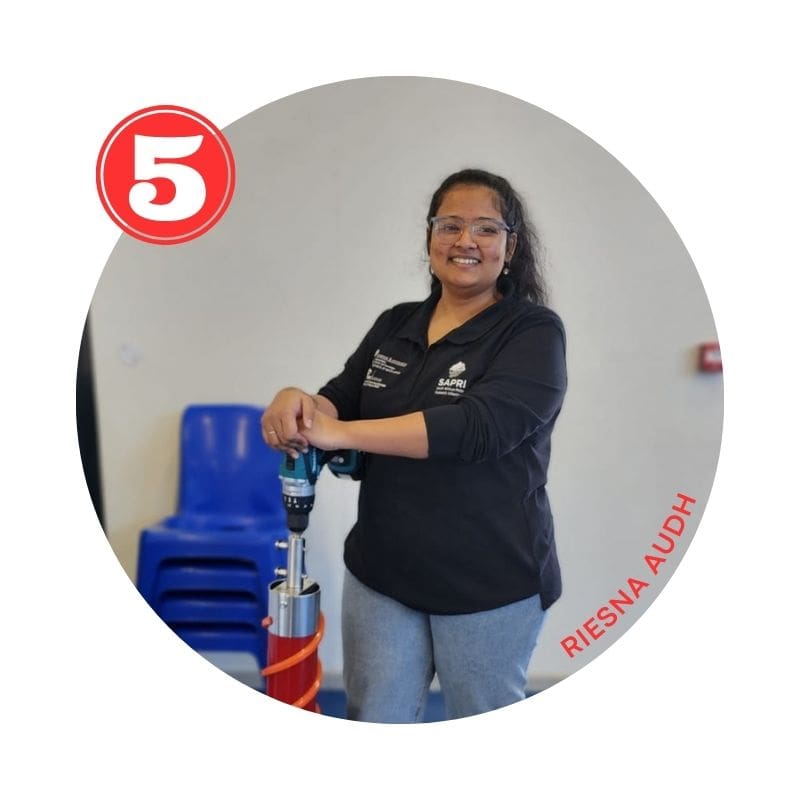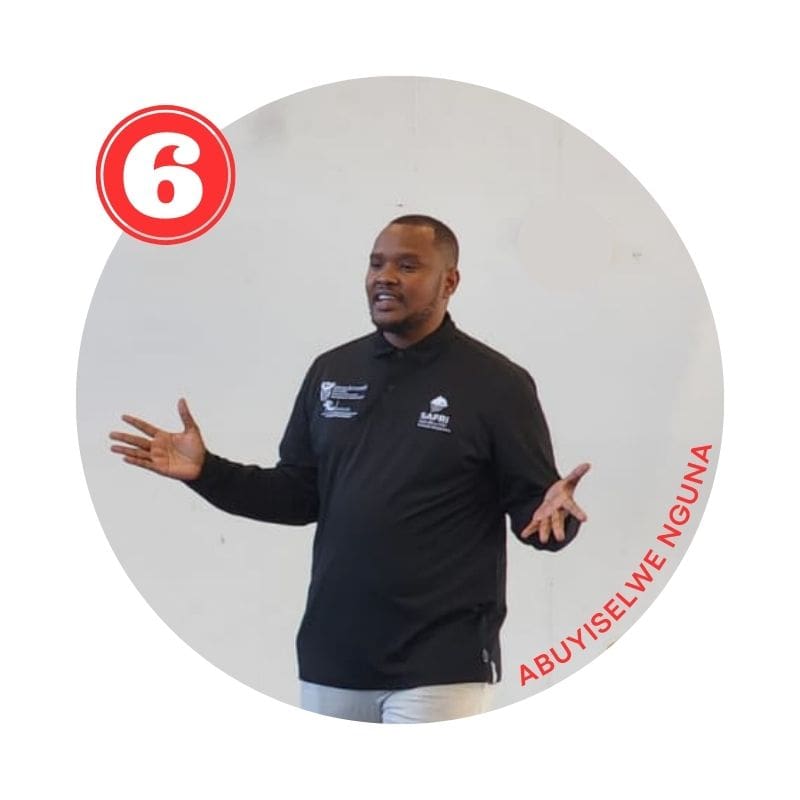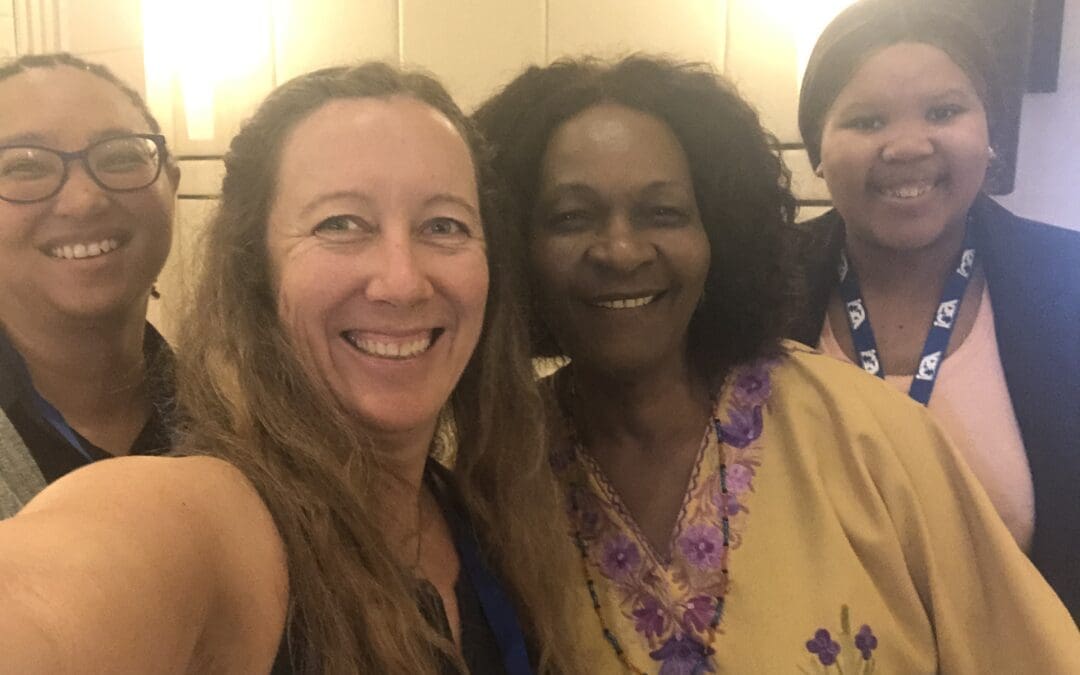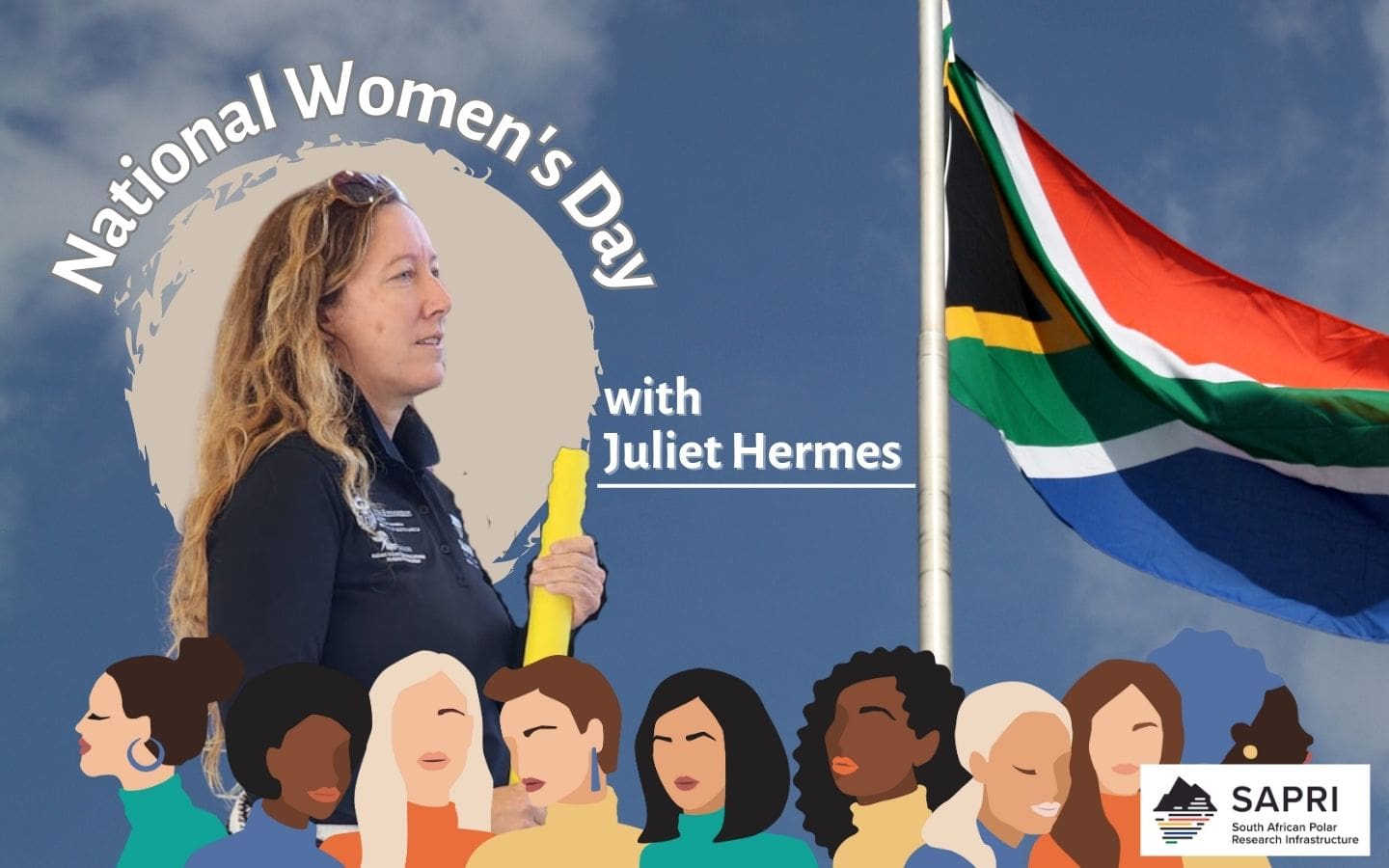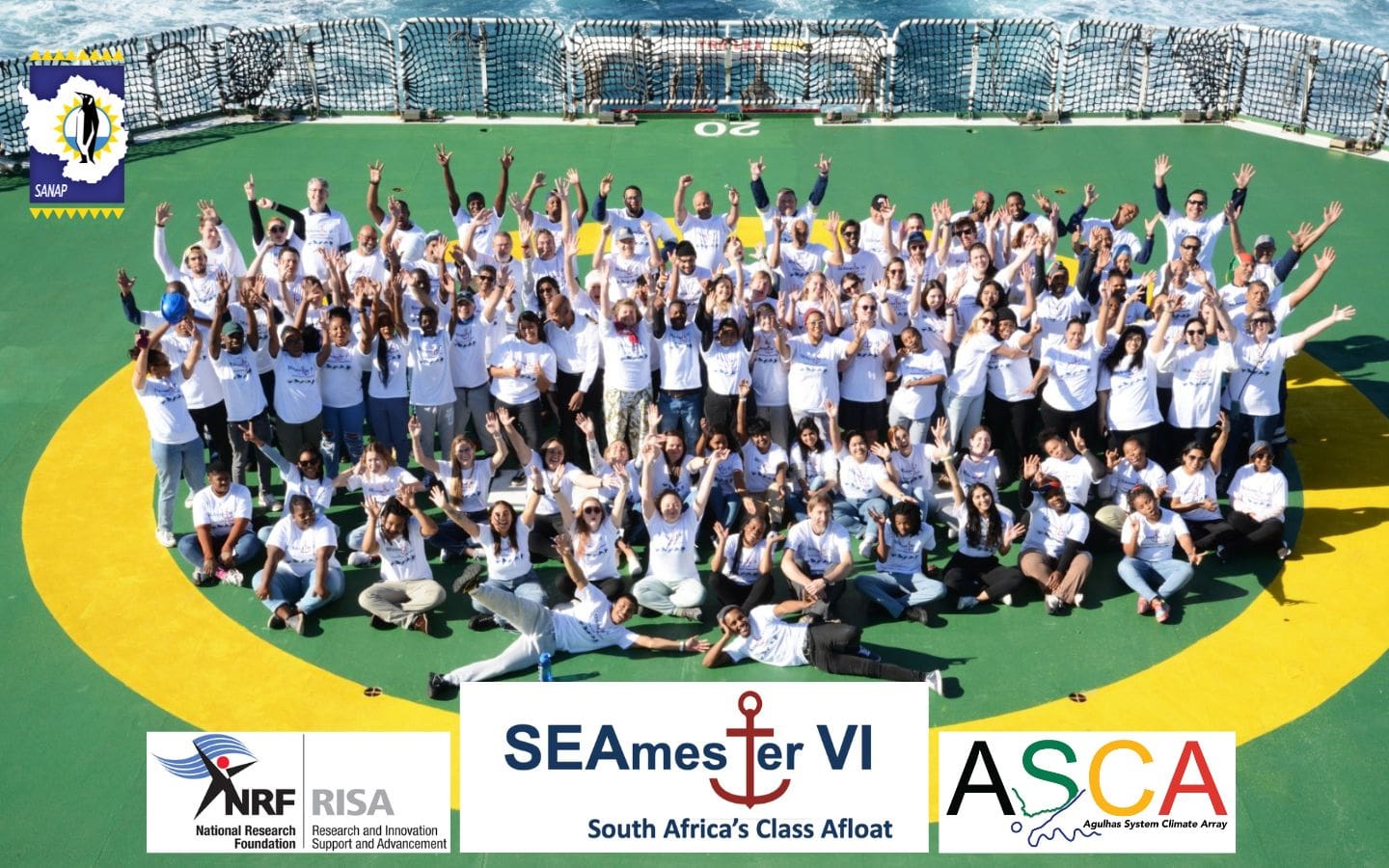
by Ria Olivier | Sep 29, 2023 | Marion Island, Research, Science
A few hundred million years after the big bang, the first stars in the universe were born during a period known as cosmic dawn.
This epoch is uncharted territory: the first and only tentative detection of cosmic dawn was reported in 2018, thus opening a new window into the universe’s past that is ripe for new discoveries.
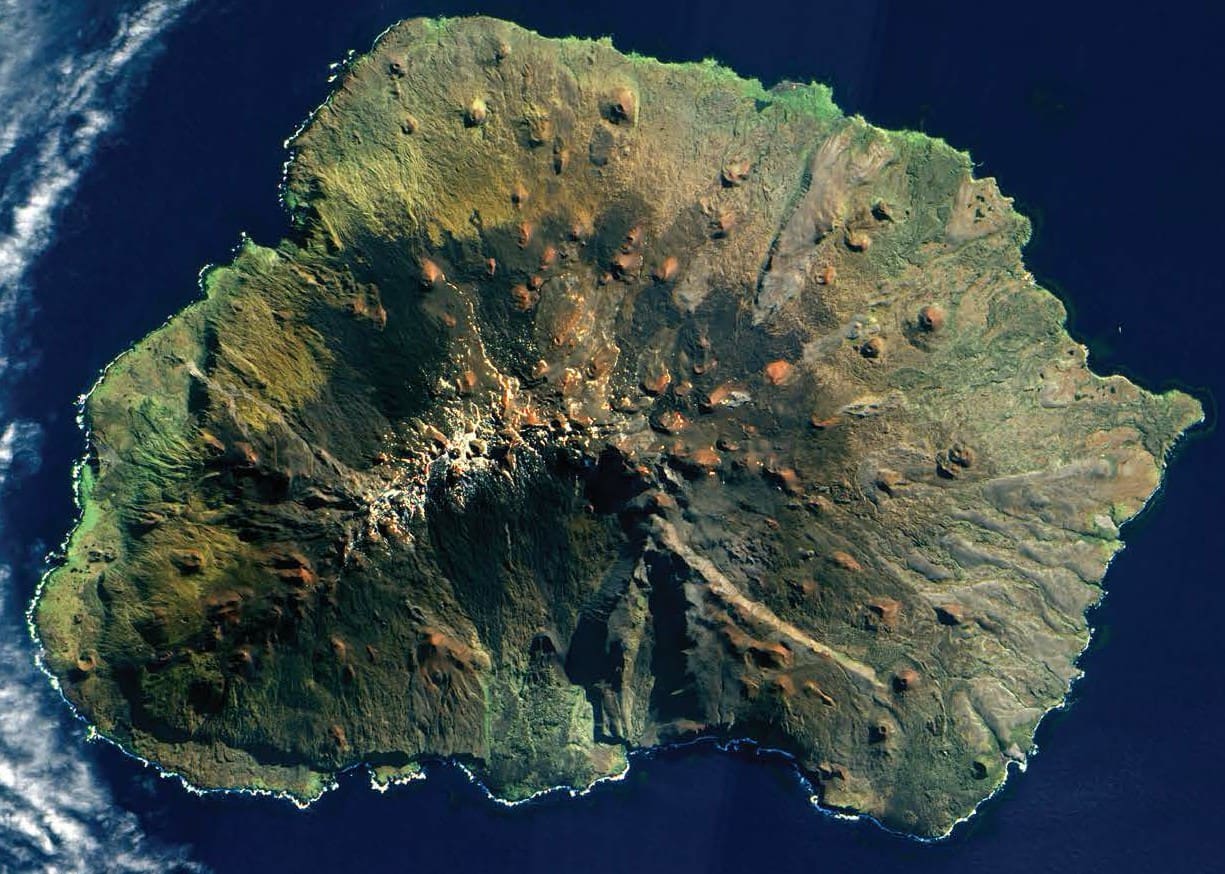 Telescopes aiming to study cosmic dawn must observe at radio frequencies (<150 MHz). These frequencies are exceptionally difficult to measure because of contamination from terrestrial radio-frequency interference and ionospheric effects.
Telescopes aiming to study cosmic dawn must observe at radio frequencies (<150 MHz). These frequencies are exceptionally difficult to measure because of contamination from terrestrial radio-frequency interference and ionospheric effects.
Our team has demonstrated that Marion Island truly offers a South African geographic advantage for low-frequency radio astronomy. The radio-quiet environment of Marion is unparalleled, surpassing even the Karoo desert, which is one of the premier radio observatory sites and the future location of the Square Kilometre Array (SKA).
With its clean observing conditions, Marion Island gives a unique opportunity to deliver high impact science that is impossible to conduct anywhere else in the world.

Radio astronomy experiment (ALBATROS) on Marion Island.
The project has installed two radio astronomy experiments on Marion Island. The first, named PRIZM, is searching for the signal from cosmic dawn and has been operating for three years. We are continuing these observations, coupled with instrument upgrades and rigorous calibration campaigns in order to obtain a robust detection. The second experiment, ALBATROS (above), is a companion project that aims to image the radio sky at <30 MHz, improving upon the resolution of current results by a factor of 20-30.
We have proven the technology with a few pathfinder antennas, and we are building and installing additional antennas to complete the full ALBATROS array. Our work is well timed to take advantage of the current solar minimum. The reduced ionospheric activity may allow us to probe the sky at particularly low observational frequencies that are otherwise difficult or impossible to access.
Prof Kavilan Moodley is the Principal Investigator on the project hosted at The Astrophysics Research Centre (ARC) at the University of KwaZulu-Natal (UKZN). The Astrophysics Research Centre (ARC) is part of the College of Agriculture, Engineering and Science at UKZN. We strive to be a world-class centre of excellence for research and postgraduate training in astrophysics and related data-intensive science. The management of the project is done by Prof. H. Cynthia Chiang and Prof. Jonathan Sievers.
Read a recent Q&A session with Professor Cynthia Chiang, experimental physicist, in the Quanta Magazine. See link below.
The Experimental Cosmologist Hunting for the First Sunrise | Quanta Magazine

Read here more about the project.
Text and Images by Prof Cynthia Chiang, Originally posted on 12 August 2021.
Edited by Anche Louw, South African Polar Research Infrastructure, 29 September 202

by Ria Olivier | Sep 13, 2023 | Announcement, Antarctica, Engineering, Gough Island, Marion Island, News, Prince Edward Islands, Research, SA Agulhas II, SA Polar Research Infrastructure, SANAP, SAPolarRI, SAPRI, Science, Southern Ocean, Stations

On the 1st of August, Errol Julies joined the South African Polar Research Infrastructure (SAPRI) as a Senior Electronics Technician, bringing with him a wealth of experience and a diverse skill set. His responsibilities at SAPRI encompass the maintenance of offshore marine infrastructure, asset management and supply chain management processes, providing technical support to researchers and students, ensuring compliance with the Occupational Health and Safety Act, and upgrading communication systems at the South African National Antarctic Programme (SANAP) research stations (bases), particularly the High Frequency (HF) systems at Marion Island between the base and field huts. Errol’s previous background and experiences make him an ideal fit for his role at SAPRI, where he continues to make significant contributions.
Meet Errol Julies: A Remarkable Journey of dedication and expertise
Errol Julies, hailing from the small town of De Doorns and having attended secondary school in Worcester, has embarked on an extraordinary path that has led him to become a highly accomplished professional in the scientific and research field.
Errol’s initial foray into the world of work began as an assistant train driver, but it was his introduction to the scientific realm at the Hermanus Magnetic Observatory (HMO), now known as the South African National Space Agency (SANSA), that truly ignited his passion. Starting as a general cleaner at HMO, Errol simultaneously pursued part-time studies and eventually obtained a BTech degree in Electrical Engineering.
For an impressive 17 years, Errol served as a Geomagnetic Observatory Technician at SANSA. In this role, he excelled in installing, maintaining, and monitoring geomagnetic and Magnetotelluric stations across Southern Africa. These stations adhered to the esteemed INTERMAGNET standards, a testament to Errol’s dedication in ensuring their construction and upkeep at the highest level. Additionally, Errol played a pivotal role in training aspiring geomagnetic observers from around the world during the biannual geomagnetic workshops hosted in different countries.
In 2015, Errol joined the Department of Forestry, Fisheries and the Environment (DFFE) as an Engineering Technician, specialising in telecommunications and instrumentation. His responsibilities encompassed managing the Very Small Aperture Terminal (VSAT) communications system from Cape Town to the SANAP bases, conducting calibration and testing of electronic equipment and instruments, and overseeing the maintenance and upgrade of electronic and HF equipment at all SANAP bases in accordance with specifications. Furthermore, Errol took on the role of Departmental Coordinating Officer (DCO), leading numerous voyages to the SANAP bases and successfully coordinating a voyage to Gough Island all by himself.
Driven by a thirst for knowledge and personal growth, Errol completed his BTech degree in Project Management in 2018, despite the challenges encountered during his voyage to Gough Island. In 2019 and 2020, he further demonstrated his resilience and expertise by overwintering on Gough Island as a Communication Engineer and team leader on the 65th Gough Island overwintering team. Currently, Errol is pursuing a Post Graduate Certificate in Education (PGCE), focusing on Mathematics and Mathematics Literacy for the Senior Phase and Technical Vocational Education and Training (TVET) colleges. This endeavor aims to support learners and students in his community through evening classes.
Errol Julies’ journey is a testament to his unwavering dedication, expertise, and commitment to excellence. His remarkable achievements and vast knowledge in the scientific and research field make him an invaluable asset to any organisation fortunate enough to have him on board.
Welcome to the SAPRI team, Errol!
Images supplied by Errol Julies.
Anche Louw, South African Polar Research Infrastructure, 13 September 2023

by Ria Olivier | Sep 9, 2023 | Announcement, Antarctica, Gough Island, News, Research, SA Agulhas II, SA Polar Research Infrastructure, SANAE IV, SANAP, SAPolarRI, SAPRI, Science, SEAmester, Southern Ocean, Stations, STEM
The South African Environmental Observation Network (SAEON) is a business unit of the National Research Foundation (NRF).
NRF SAEON celebrated its 21st anniversary on 7 September 2023. See the event programme below.
It is inspiring to see what SAEON has achieved over 21 years. “SAEON encompasses seven Research Nodes throughout South Africa and a National Office that is located in the country’s political capital of Pretoria” (Read more about the nodes here).
SAEON manages three research infrastructures developed by the Department of Science and Innovation (DSI) as part of the South African Research Infrastructure Roadmap (SARIR). The South African Polar Research Infrastructure (SAPRI) is one of the three research infrastructures, and was established in 2021 (see the SAPRI timeline here). The SAPRI hub is located in the SAEON Egagasini Node offices in Cape Town.

The SAEON Egagasini Node and SAPRI team at the NRF SAEON 21st Anniversary. Video: click on the image.
Anche Louw, South African Polar Research Infrastructure, 09 September 2023

by Ria Olivier | Aug 25, 2023 | Antarctica, Legacy, Marion Island, News, Prince Edward Islands, Research, SA Agulhas II, SA Polar Research Infrastructure, SANAE IV, SANAP, SAPolarRI, Science, Southern Ocean, Stations, STEM, sub-Antarctic
The South African Polar Research Infrastructure (SAPRI) with the Antarctic Legacy of South Africa (ALSA) and the South African Environmental Observation Network (SAEON) Egagasini Node visited Generation Schools Imhoff, in Kommetjie on 20 July 2023.

Generations Primary is based on the Montessori ethos of independent children working and the Cambridge model of education. The school structure consists of various phases with mixed-age groupings “which allows children to work together, to learn from and teach each other.” The mixed-age group 9 – 12 years has recently completed projects and tasks related to the Antarctic environment, creating a space where learners can develop, in a creative way, a sense of the 7th continent. The invite to visit the school to further connect the application of academics in the real world was welcomed.
The 110 learners with teachers, were presented with a rhythmic exercise with boom-whackers (musical plastic tubes) as an ice-breaker activity, which was followed by a “Journey through the Southern Ocean, via Marion Island, to Antarctica”, which was presented by Ria Olivier (ALSA), Sikelelwa Mtyenene (SAEON Egagasini Node), Abuyiselwe Nguna (SAPRI) and Riesna R. Audh (SAPRI). Various interactive exhibits were set up in the school hall, which further gave learners the opportunity to interact with the ALSA, SAPRI and SAEON teams.
“Journey through the Southern Ocean, via Marion Island, to Antarctica”
Follow the journey below.

 | Start at Cape Town Harbour - Ria Olivier
History: Archivist with 10 years' involvement in SANAP and Principal Investigator of the Antarctic Legacy of South Africa project, talks about South Africa's involvement in the Antarctic regions. |
 | Sail past the coast of South Africa - Sikelelwa Mtyenene
Coastal voyage: research conducted in the coast off South Africa, where the Atlantic and Indian oceans meet. |
 | Stop at Marion Island - Abuyiselwe Nguna
Science weather, fauna and flora. The speaker shares his experience as a field assistant, part of a Marion Island overwintering team member. |
 | Cross the Southern Ocean - Riesna Audh
Oceanographic sampling on board the South African research and supply vessel, the S.A. Agulhas II. |
 | Pass seaice and icebergs - Riesna Audh
The speaker has been on board the S.A. Agulhas II during various Antarctic expeditions (counting to over 300 days in total), for her research on sea ice in the Antarctic marginal ice zone. She shares her experiences. |
 | Arrive at Antarctica - Abuyiselwe Nguna
What you can expect. Antarctic operations. Clothing (protective gear) and more info about the South African National Antarctic Expedition station (SANAE IV). |
Interactive exhibits
This collaborative science engagement event was focused on communicating marine and Antarctic research in such a way to foster curiosity for these regions. The school also received a set of books sponsored by the Antarctic Legacy of South Africa (see image below).
Video: Leaving fingerprints on Antarctica.
Graphic element (Journey to Antarctica) designed by: Riesna R. Audh, SAPRI, Polar Lab.
Anche Louw, South African Polar Research Infrastructure, 25 August 2023.

by Ria Olivier | Aug 9, 2023 | Commemorative Days, Important Dates, News, Research, SA Polar Research Infrastructure, SAPolarRI, SAPRI, Science, Southern Ocean, Women in Science

Prof Juliet Hermes is the Manager of the South African Polar Research Infrastructure (SAPRI), the Manager of the NRF- SAEON Egagasini Node, Honorary Professor at the Nelson Mandela University (NMU), Professor at the University of Cape Town (UCT) and heavily involved in a number of international programs and committees where she represent the fantastic work being done in South Africa and Africa as a whole (see list below). She is a passionate physical oceanographer who loves the ocean, a mom of two boys and her life is guided by the words of late Nelson Mandela:
“What counts in life is not the mere fact that you have lived. It is what difference we have made to the lives of others that will determine the significance of the life we lead.”
She makes a difference in her working environment through her collaborative nature and approachable demeanor.
“At the NRF- SAEON Egagasini Node I am supported by an incredible team consisting of biodiversity, modelling, observing and engagement specialists and of course administrative support. Together we advance our understanding of the marine offshore environment and our ability to detect, predict and react to global change through long term observations, modelling and research data”.
From Interim SAPRI Manager to SAPRI Manager
Juliet was initially involved in SAPRI as the South African Environmental Observation Network (SAEON) institutional champion and worked closely with Dr Tammy Morris and Prof Marcello Vichi in writing the original proposal and following business plan for SAPRI. As the manager of the NRF-SAEON Egagasini Node, which hosts the SAPRI LTO-Land and LTO-Ocean integrated facilities (IFs), she was made the interim manager of SAPRI in November 2021. Following discussions with the National Research Foundation (NRF), Department of Science and Innovation (DSI) and Department of Forestry, Fisheries and the Environment (DFFE) this role was then made permanent on the 1st of April 2023.
“It is a team effort with SAPRI and SAEON staff working closely together and the community also supporting us through the different user fora”.
Read more about the SAPRI IFs here.
Role of the SAPRI Manager
The role will change over time, the first 3 years will be overseeing the implementation of SAPRI – setting up the governance, employing the staff, overseeing the user fora groups, reporting to the advisory committees, the NRF and the DSI, working with DFFE, the South African National Antarctic Programme (SANAP) and the Antarctic Legacy of South Africa (ALSA) to integrate SAPRI and to maximize marine and polar sciences in South Africa. Understand the stakeholder needs and support the current community, whilst driving transformation and bringing in new stakeholders in terms of disciplines and institutes. A key aspect is also ensuring the sustainability of long term observations in the marine and polar space, and resolving long going issues between science and logistics.
Once the implementation has happened the role will be more in overseeing the operations, sourcing additional funding, driving transformation and continuing to work closely with DFFE and SANAP.
My expectations for SAPRI are for it to fulfill its vision: “to enable balanced and transformed research growth across the multiplicity of marine and polar disciplines, and to maintain and further expand the world-class, long-term observational research infrastructure and datasets already established within the South African marine and polar research environment.”
Juliet represent South Africa (and Africa) in the following international programs and committees:
- Ocean Decade task force to implement the Africa roadmap (read more here).
- Chair of the Climate and Ocean – Variability, Predictability, and Change (CLIVAR) Indian Ocean Regional Panel.
- Chair of the Indian Ocean Rim Association Academic Group (IORAG) and the node hosts the South African chapter for this.
- Ocean Decade working groups (on capacity development and adaptation).
- Executive committee member of International Association for the Physical Sciences of the Oceans (IAPSO).
- Vice chair on the Observation Coordination Group.
- Work closely with The Global Ocean Observing System for Africa (GOOS for AFRICA).
Read more: Second professorship for SAEON’s Juliet Hermes

Images and text supplied by Juliet Hermes.
Anche Louw, South African Polar Research Infrastructure, 09 August 2023.

by Rabia Mathakutha | Jul 26, 2023 | Environment, Oceanography, Research, SA Agulhas II, SA Polar Infratsructure, SA Polar Research Infrastructure, SANAP, SAPolarRI, SAPRI, Science, SEAmester

SEAmester – South Africa’s Class Afloat in association with the Agulhas System Climate Array (ASCA).
June 2023 saw the success of the 6th SEAmester expedition, a programme aimed at accelerating marine science as an applied and cross-disciplinary field to postgraduate students all over South Africa. Forty-seven science students from institutions across the country made it through the programme and participated in the SEAmester ten-day at-sea practical training course aboard the flagship South African research vessel, S.A. Agulhas II. The programme was led by Prof. Isabelle Ansorge, head of the Department for Oceanography at the University of Cape Town (UCT) and initiator of the programme; and coordinated by Tahlia Henry.
SEAmester is a programme initiated to meet the Department of Science and Innovation (DSI) objectives of creating platforms to “attract young researchers to the region and retain them by exciting their interest in aspects of global change”. SEAmester introduces marine science as an applied and cross-disciplinary field to students. The strength of SEAmester is that postgraduate students combine theoretical classroom learning with the application of this knowledge through ship-based and hands-on research.
SEAmester was undertaken in collaboration with ASCA, a science project spearheaded by DSI and the South African Environmental Observation Network (SAEON), Egagasini Node. ASCA is a multi-institutional, international collaboration, whose objectives are to determine how the Agulhas Current and its role in the global conveyor belt varies over time by providing the first long-term observations of Agulhas Current volume, heat and salt transport and its variability through seasonal to interannual timescales. To read more about ASCA click here.
Since ASCA provides a large, international programme performing ground-breaking science, and is also being used as a training platform for students, interns and junior staff, teaming SEAmester with ASCA makes an excellent match, one that has worked successfully for all SEAmester expeditions to date.
Students taking photos and soaking in the views as they bid farewell to Cape Town en route to the expedition.
Setting sail
The S.A .Agulhas II voyaged from East Pier, Cape Town on 20 June 2023 to the Agulhas Current, off East London, and docked back in Cape Town on 29 June 2023. The expedition involves running a transect across the core of the Agulhas Current off Port St Johns. The SEAmester VI expedition encompassed a group of forty-three postgraduate students from various Higher Education Institutions (HEIs) across the country (both inland and along the coast), including, two high school learners from the Northwest School, and two junior scientists from Anchor Environmental Consultants, as part of expending its network and reach.
The first two days of the voyage en route to the ASCA transect gave all on board a chance to settle in and combat their seasickness. Among the bird, mammal and weather observations along the way, the students managed to get further acquainted with life at sea.
SEAmester VI Activities
The students were divided into two module steams, “Tools of the Trade” and “Oceans in a Changing Climate”. Oceans in a Changing Climate focuses on the biological aspect of the ocean, the role of the ocean as a carbon source and carbon sink, the interconnectivity of the ocean with the atmosphere and how it affects life in the sea. Tools of the Trade focuses on various methods of measuring the physical properties of the ocean, using an assortment of instrumentation each comprising highly expensive sensors.
Learning comprised of daily class-room lectures, daily assignments and deck work – running in parallel to the ASCA programme. Students from both streams provided research support to specialist scientists and obtained daily hands-on deck training, data collection, sampling and data analysis. Each student gained experience working with the full suite of oceanographic, atmospheric and biological ship-based instrumentation such as CTD, underway measurements and autonomous devices such as Argo, SVP drifters, as well as experience on biological net tows. Training on data analysis following each dedicated SEAmester CTD station was provided, as well as technical and electronic experience in calibrating and modifying each instrument. In addition, a third stream is offered to all students which is the “Art” stream, this allows students to be creative in tasks such as tiled mosaics, photography, and documenting their cruise through journals and film-making. The students also had to work on a specific scientific mini-project related to their area of interest and the scientific research underway.
The spectrum of lectures included Introduction to Physical Oceanography, Microbiology and DNA, Benthic Environment, Oxygen and Nutrients, Molluscs, Seals and Dissections, Micro-plastics, Blue Economy, Oil spills, Maritime Archaeology, Hydrography, GIS Mapping, Film, Photography, Astronomy, Engineering, Acoustics, and Phytoplankton; presented by highly skilled lecturers and professionals from South Africa’s HEIs and organisations alike.
SEAmester VI Takeaways
The jam-packed SEAmester and ASCA operations ran smoothly with no issues to report for the entire expedition. The students were dedicated and rose to the challenge and completed their projects timeously. The programme came to an end on the morning of the 29th of June after the students showcased their SEAmester movies about their journey and received their completion of the programme certificates. The students were then treated to a cake by the SA Agulhas II crew. An art exhibition and farewell gathering was held the night before, where students reflected on their journey and the expedition, expressing that SEAmester has been rewarding both educationally and in terms of the network and connections they made. A social braai and themed party were held on one of the last nights, during this time, all the students and staff came together to unwind after all the tasks had been submitted.
With that said, the biggest success of SEAmester remains to be its ability to break down social, cultural, economical, and racial barriers between students and in doing so build the next generation of integrated marine scientists in South Africa.
SEAmester-South Africa’s Floating University is a NRF-SANAP funded project. Click on the link below to view all the current NRF-SANAP funded projects.
NRF-SANAP funded projects
Featured Image credit: Associate Professor Svea Josephy, Fine Art (photography) at the Michaelis School of Fine Art, University of Cape Town.
Images: Rabia Mathakutha, South African Polar Research Infrastructure; Megan Maroen, Stellenbosch University.
Rabia Mathakutha, South African Polar Research Infrastructure, 26 July 2023.
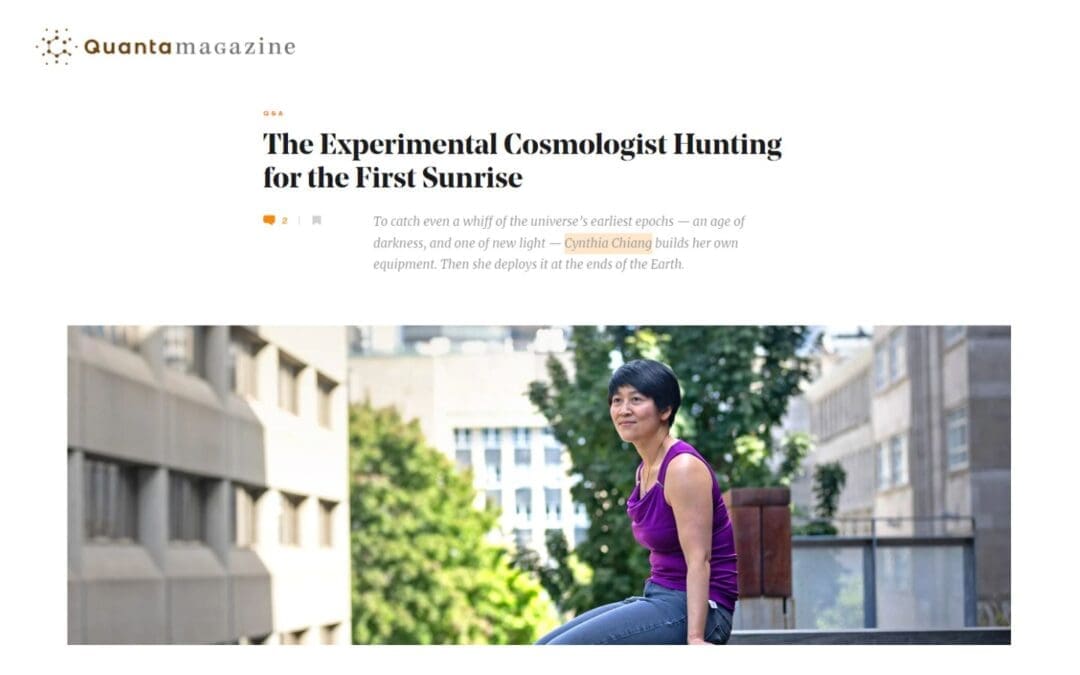
 Telescopes aiming to study cosmic dawn must observe at radio frequencies (<150 MHz). These frequencies are exceptionally difficult to measure because of contamination from terrestrial radio-frequency interference and ionospheric effects.
Telescopes aiming to study cosmic dawn must observe at radio frequencies (<150 MHz). These frequencies are exceptionally difficult to measure because of contamination from terrestrial radio-frequency interference and ionospheric effects. 